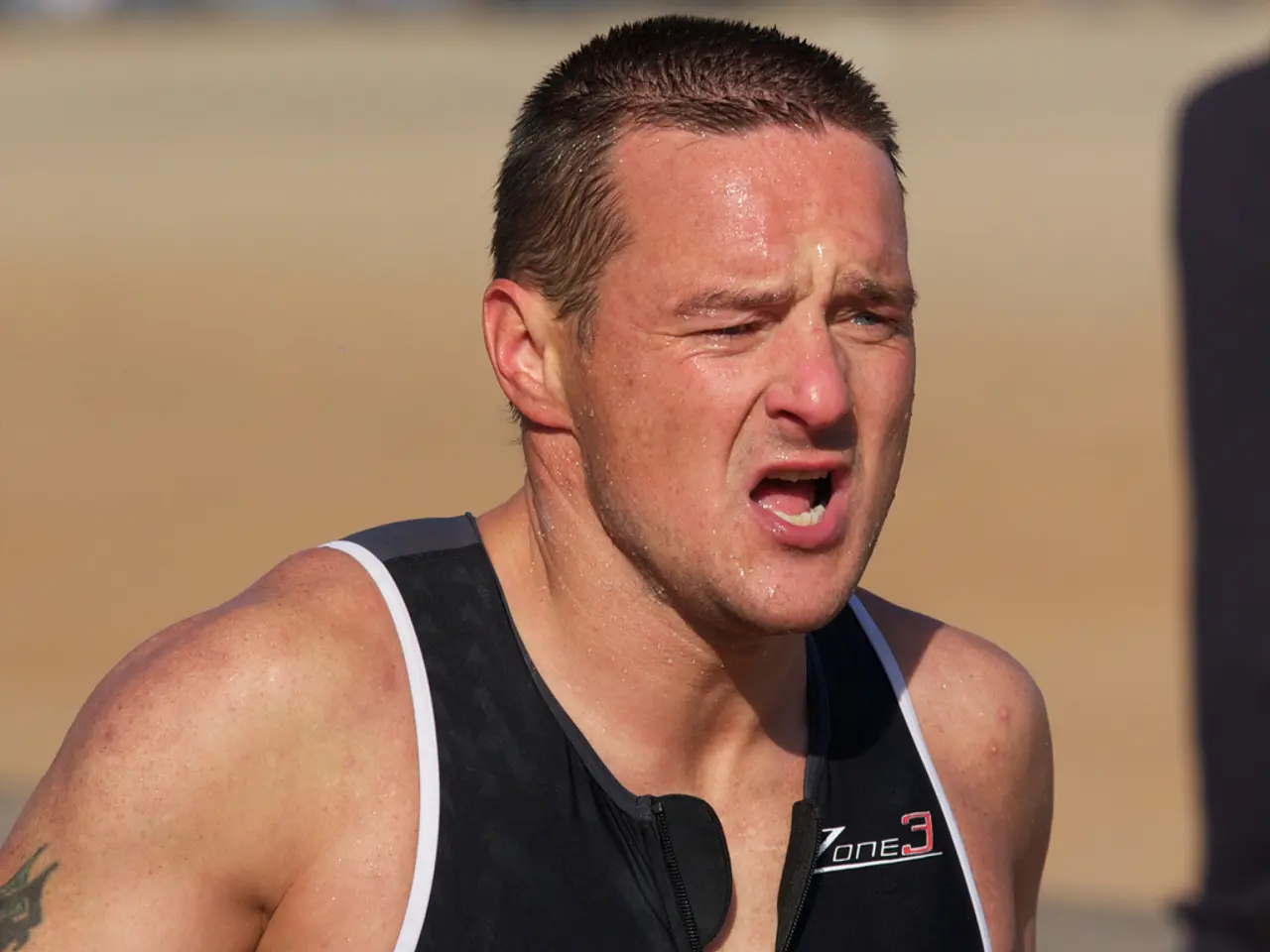Exercise Language Decoded: Unveiling the Hidden Messages Your Body Embodies during Physical Activity
In the realm of health and fitness, sweat has long been a topic of interest. Beyond just a sign of physical exertion, sweat holds a wealth of information about our bodies, revealing insights into our stress levels, sleep quality, and nutritional status.
Cortisol, often referred to as the stress hormone, seeps through our skin and creates a chemical signature of our stress levels that others can potentially detect. This chemical signature is just one example of the complex biochemical messages our bodies send through sweat, including over 2,000 different compounds.
Stress sweating, produced when anxious, nervous, or excited, is thicker and contains proteins loved by bacteria. It also contains traces of stress hormones, immune system markers, metabolic byproducts, and even pheromones. Contrastingly, sweat produced during enjoyable, endorphin-releasing exercise may have mood-boosting effects on others.
Immunoglobulin A, an antibody that helps fight infections, appears in sweat during exercise. This means that our sweat can reflect our sleep quality and recovery status, offering a window into our overall health.
The primary ingredient in sweat is water, but the real magic happens in the remaining 1% of dissolved substances. The average person loses 1.5 to 3 liters of sweat during a single workout, and this sweat contains amino acids, vitamins, and trace elements that paint a picture of our nutritional status.
Elite athletes often begin perspiring within the first 30 seconds of exercise, while less conditioned individuals might take 5-10 minutes to break their first sweat. During intense workouts, both types of sweat are produced simultaneously. Back and chest sweating typically correlate with core temperature regulation, while facial sweating often indicates high intensity or elevated stress levels.
Personalized hydration strategies based on individual sweat composition could revolutionize endurance sports. Sodium and chloride make up the bulk of sweat's mineral content, but their concentration varies dramatically based on hydration status, fitness level, and weather. Well-trained athletes lose less sodium in their sweat than beginners due to a phenomenon called 'sweat adaptation'.
Companies are developing sweat-based health monitoring systems that could detect early signs of illness, overtraining, or nutritional deficiencies. Wearable sweat sensors are being developed to provide real-time feedback on hydration status, electrolyte balance, and metabolic state. Asymmetrical sweating patterns can reveal muscle imbalances or compensation patterns.
Sweat rate decreases as dehydration progresses, making it an unreliable indicator of when you need fluids. However, the timing of when you stop sweating after exercise is equally revealing. Some companies working on the development of skin sensors that analyze metabolism, electrolyte, and hydration levels during exercise include WHOOP, Biostrap, and Nix Biosensors.
Humans can subconsciously detect stress pheromones in sweat, and more sweat does not necessarily mean a better workout, as sweat rate is largely genetic and has little correlation with workout intensity or calorie burn. The chemical composition of emotional sweating differs from thermal sweating, offering another layer of information about our emotional and physical states.
In essence, sweating is one of your body's most sophisticated communication systems, constantly adjusting its chemical composition based on physical, mental, and emotional state. As technology continues to evolve, we can expect to see even more innovative applications of sweat analysis in the future of health and fitness.
Read also:
- Inadequate supply of accessible housing overlooks London's disabled community
- Strange discovery in EU: Rabbits found with unusual appendages resembling tentacles on their heads
- Duration of a Travelling Blood Clot: Time Scale Explained
- Fainting versus Seizures: Overlaps, Distinctions, and Proper Responses






